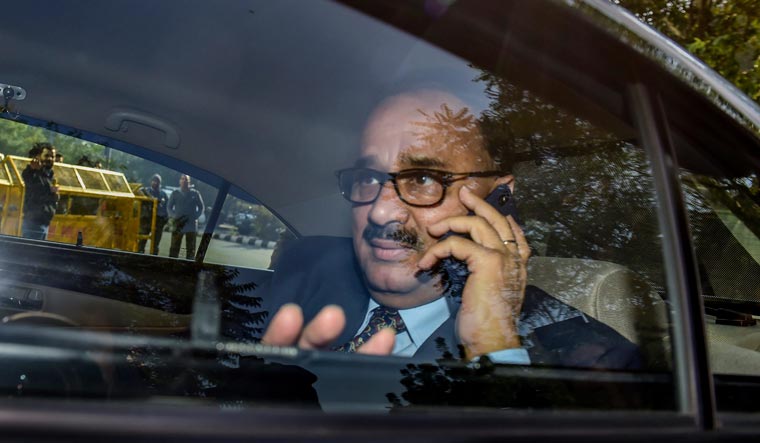
Merely hours after he was removed from the post of CBI chief by the Centre on October 23, 2018, Alok Verma was included as a person of interest by an unidentified agency which had access to Pegasus spyware.
According to The Wire, three phone numbers registered to Verma’s name were made note of by the aforementioned agency.
Verma’s sacking by the Centre had come soon after he signed a similar order sending his deputy and CBI special director Rakesh Asthana on leave. The former CBI chief had launched an investigation against Asthana, accusing him of corruption. Verma was divested of his powers even as he had three more months in office.
Asthana and another CBI official, A.K. Sharma, too were reportedly added to the list of potential targets.
Apart from Verma, the telephone numbers of his wife, daughter and son-in-law were added to the list later. As many as eight numbers of people from his immediate family was included in the list, reports The Wire Odisha.
Verma’s name was added to the list of 10 persons of interest, of which eight phones have been compromised by Pegasus, as forensically confirmed by Amnesty International’s tech lab.
However, after Verma retired from government service in February 2019, his name disappeared from the list as person of interest.
Interestingly, after Verma’s ouster, four people were arrested outside his official residence for allegedly snooping on him. The four men were allegedly suspiciously lurking around the building and spying on Verma. The men were caught by his security personnel and handed over to Delhi police.
The Pegasus spyware was created by Israeli technology firm NSO.
Meanwhile, the Centre The government has dismissed the reports on the use of Pegasus software to snoop on Indians, saying the allegations levelled just ahead of the monsoon session of Parliament are aimed at “maligning Indian democracy”.